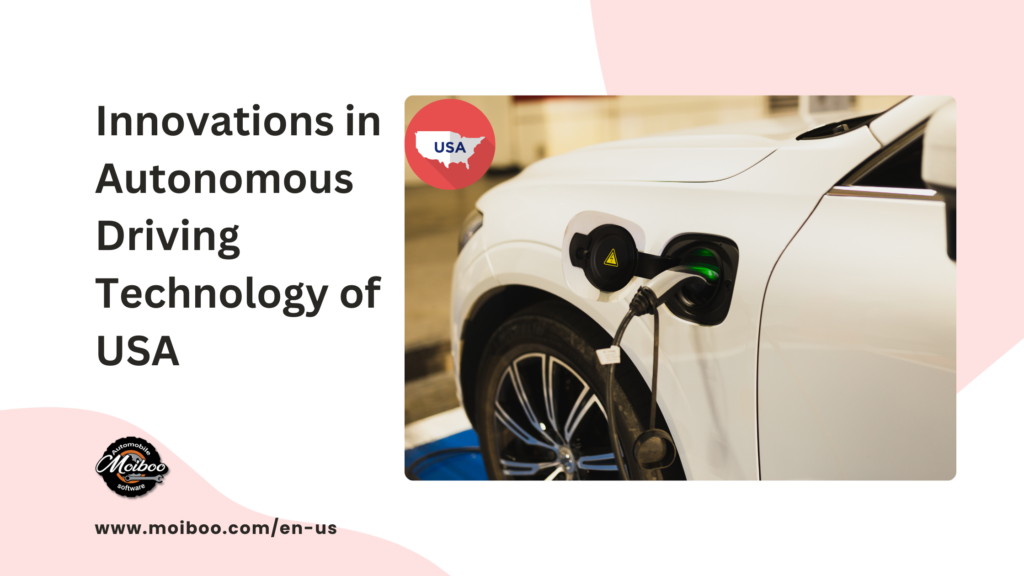
In this blog post, we will explore some of the latest trends and innovations in autonomous driving technology of USA. Autonomous driving technology is rapidly advancing, and the United States is at the forefront of this innovation. In recent years, there have been significant developments in this field, including the introduction of new autonomous vehicles, improved safety features, and advanced software systems. In this blog, we will explore the latest trends and innovations in autonomous driving technology in the USA.
Innovations in Autonomous Driving Technology of USA
- Enhanced safety features
One of the most significant trends and innovations in autonomous driving technology of USA is the development of enhanced safety features. Manufacturers are introducing advanced driver assistance systems (ADAS) that can detect potential hazards and alert drivers to potential dangers. Some of these features include lane departure warnings, automatic emergency braking, and blind-spot monitoring.
- Advancements in software systems
Software systems are another key area of innovations in autonomous driving technology. Companies are developing advanced algorithms that can analyze data from sensors, cameras, and other sources to make split-second decisions. This technology can help vehicles to navigate complex environments and make better decisions, such as when to change lanes or avoid obstacles.
Also many automobile management system or softwares are there for ex- Moiboo Automotive Cloud ERP Software for modern businesses.
- Self-driving trucks
Another trend for innovations in autonomous driving technology is the development of self-driving trucks. Companies are exploring ways to automate the trucking industry, which could lead to significant cost savings and increased efficiency. Autonomous trucks could also reduce the number of accidents caused by human error and improve overall road safety.
- Electric and hybrid vehicles
As the world moves towards a more sustainable future, electric and hybrid vehicles are becoming more popular. Autonomous driving technology is a natural fit for these types of vehicles, as they require less maintenance and have fewer moving parts than traditional gas-powered vehicles. Self-driving electric and hybrid vehicles could significantly reduce carbon emissions and help to mitigate the effects of climate change.
- Ride-sharing services
Finally, ride-sharing services are another area where autonomous driving technology is making a significant impact. Companies like Uber and Lyft are exploring ways to use self-driving vehicles to reduce the cost of transportation and increase efficiency. This technology could also provide new opportunities for people who are unable to drive, such as the elderly or disabled.
What are the main regulatory and legal issues for innovation in autonomous driving technology?
Innovations in Autonomous driving technology poses many regulatory and legal challenges that need to be addressed before it can be widely deployed and adopted in USA. Some of the main issues include:
- Defining levels of automation: The Society of Automotive Engineers (SAE) has defined six levels of automation for vehicles, ranging from level 0 (no automation) to level 5 (full automation). However, these levels are not legally binding and may not reflect the actual capabilities and limitations of different self-driving systems. For example, Tesla’s Autopilot system is considered to be level 2 (partial automation), but it has been marketed and perceived by some drivers as level 4 (high automation), leading to overconfidence and misuse. There is a need for clear and consistent definitions and standards for different levels of automation and their corresponding responsibilities and expectations for human drivers and self-driving systems.
- Updating federal and state regulations: Currently, there is no comprehensive federal regulation or legislation for autonomous driving technology in USA. In the absence of federal regulation, states have taken different approaches to regulate innovations in autonomous driving technology, creating a patchwork of laws and rules that vary in scope, requirements, and enforcement. For example, some states, such as California, Arizona, Michigan, and Pennsylvania, have enacted laws or issued executive orders that allow testing and operation of self-driving vehicles on public roads under certain conditions. Other states, such as New Jersey, Rhode Island, and Maryland, have not enacted any laws or issued any executive orders governing autonomous driving technology. This creates confusion and inconsistency for the industry and the public, and may hinder the innovation and deployment of self-driving vehicles across USA.
- Addressing liability and insurance issues: Autonomous driving technology raises complex questions about liability and insurance in the event of accidents or damages involving self-driving vehicles. For example, who is liable for a crash caused by a self-driving vehicle: the human driver, the vehicle manufacturer, the software developer, or the network provider? How will liability be determined and apportioned among multiple parties? How will insurance policies cover self-driving vehicles and their occupants? How will insurance premiums be calculated based on different levels of automation and risk? How will claims be processed and settled in a timely and fair manner? These questions require new legal frameworks and solutions that can balance the interests and rights of all stakeholders involved in autonomous driving technology.
- Protecting cybersecurity and data privacy: Innovations in Autonomous driving technology relies on various sensors, cameras, software, artificial intelligence, networks, and data to enable self-driving vehicles to perceive their environment, communicate with other vehicles and infrastructure, and make decisions. However, this also exposes self-driving vehicles to potential cybersecurity threats and data privacy breaches that could compromise their safety
Conclusion
In conclusion, the latest trends and innovations in autonomous driving technology of USA are changing the way we think about transportation. From enhanced safety features to advanced software systems, these innovations are making self-driving vehicles safer, more efficient, and more sustainable. As we continue to explore the possibilities of autonomous driving technology, we can look forward to a future where transportation is safer, more accessible, and more sustainable than ever before.
Looking for a software for your modern automobile shop or business, create an account below we will help you.
